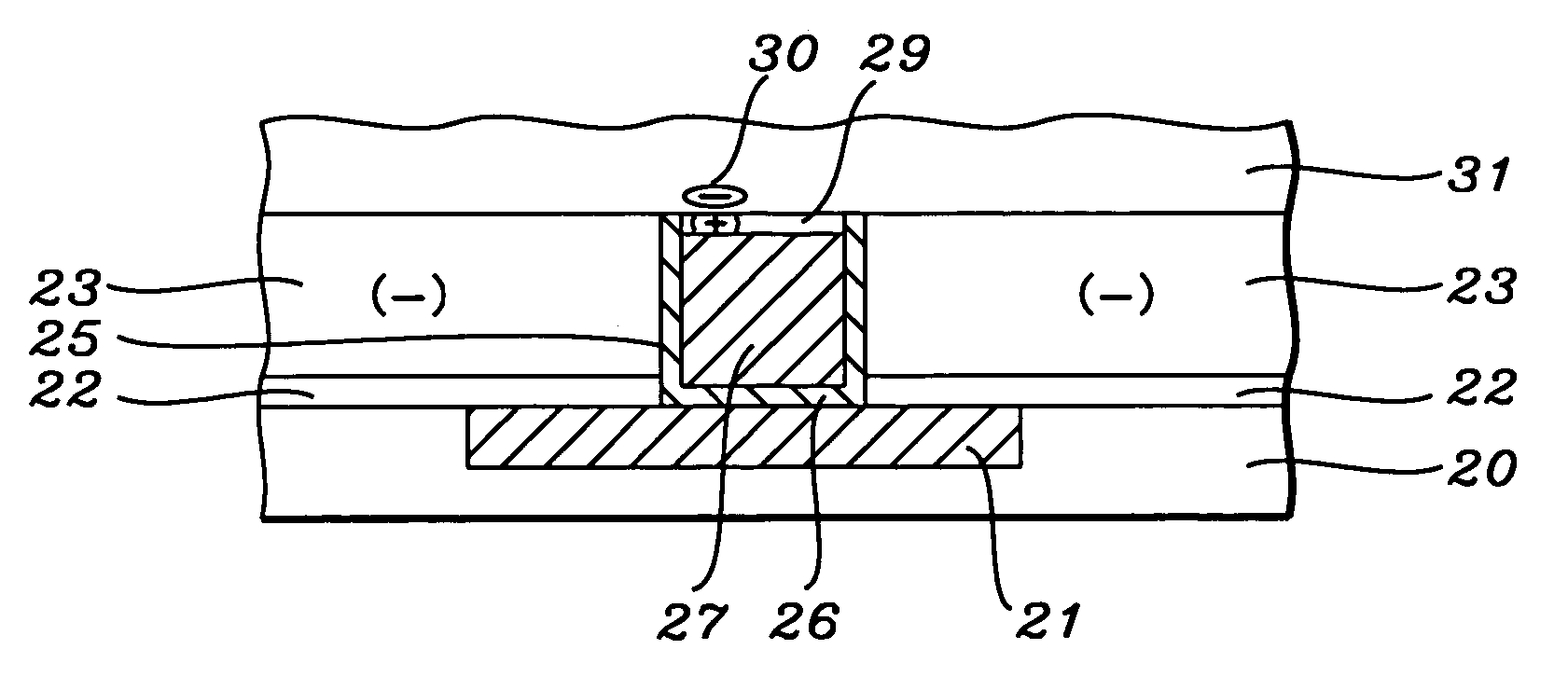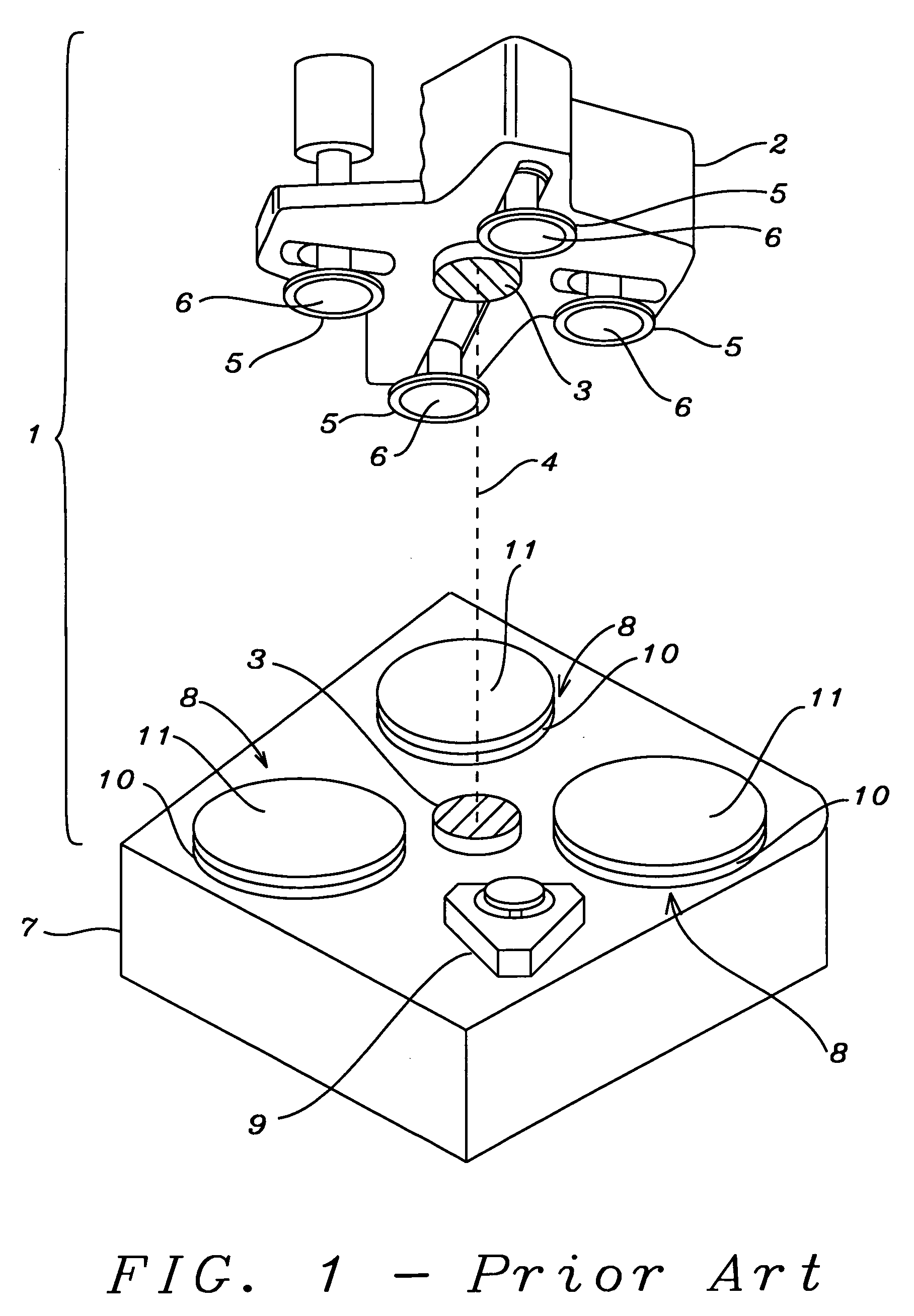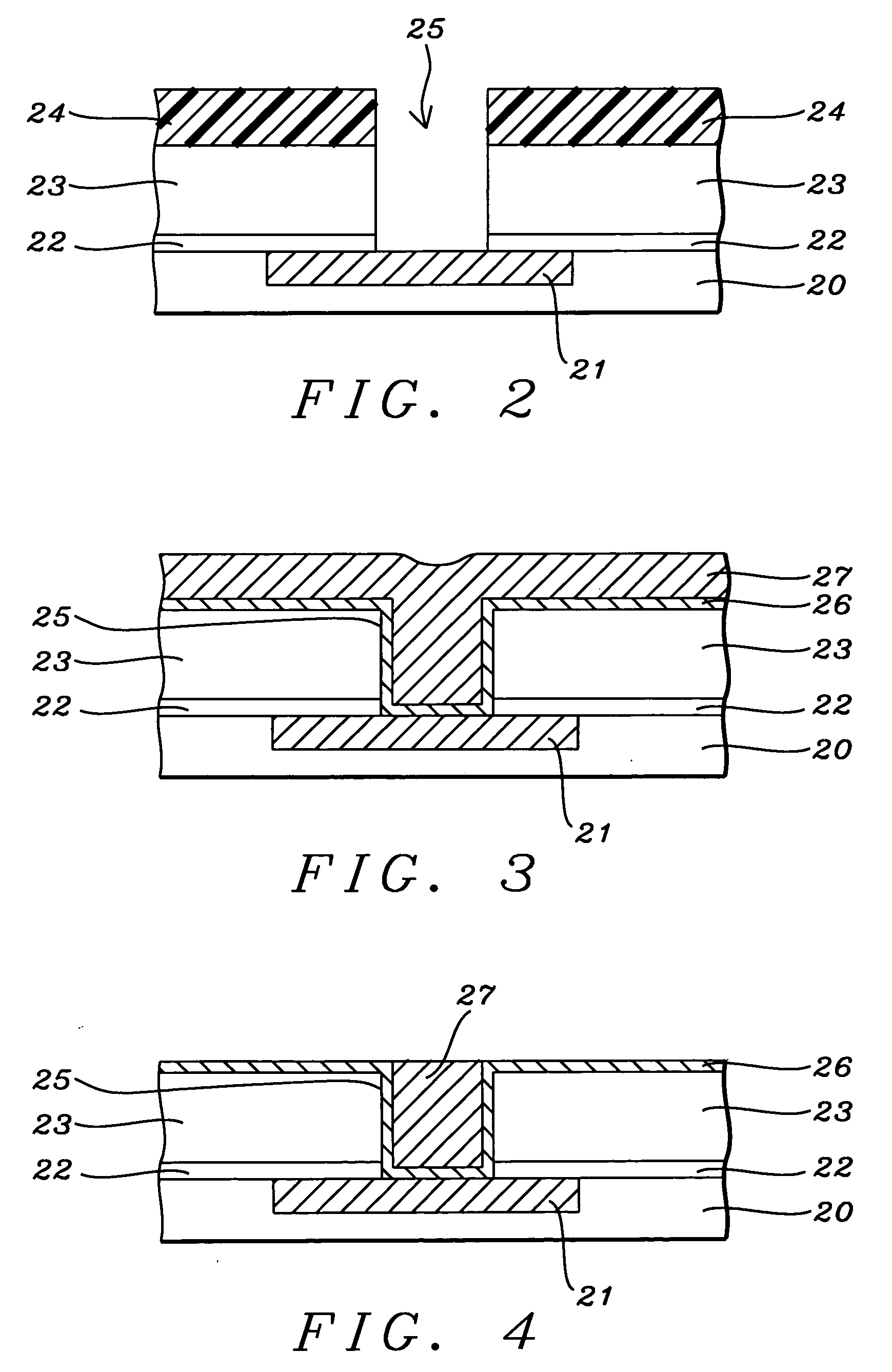Copper CMP defect reduction by extra slurry polish
a technology of slurry polish and copper, which is applied in the direction of semiconductor/solid-state device manufacturing, basic electric elements, electric apparatus, etc., can solve the problems of difficult removal from the surface of a charged layer, inability to rinse as in steps c and d, and reduce the number of particle defects produced, reduce the down force of the polishing pad during di water rinse segments of the oxide polish process, and reduce the defect number
- Summary
- Abstract
- Description
- Claims
- Application Information
AI Technical Summary
Benefits of technology
Problems solved by technology
Method used
Image
Examples
Embodiment Construction
[0022] The present invention is especially useful in reducing the amount of particle defects formed as the result of a CMP process flow in a damascene scheme that includes three different polish processes at three different polish stations. In one embodiment, the present invention is an oxide polish process that follows a first CMP process in which a copper layer is substantially planarized and a second CMP process where a diffusion barrier layer is removed from the surface of a dielectric layer. Although the drawings depict the application of the CMP process flow to the fabrication of a copper interconnect formed in a via above an underlying metal layer, the drawings are not intended to limit the scope of the invention and other applications are possible. For example, the interconnect may also be a contact to an underlying conductive layer such as a source / drain region in a transistor. Optionally, the copper interconnect fills a trench and an underlying via in a dual damascene stru...
PUM
| Property | Measurement | Unit |
|---|---|---|
| temperature | aaaaa | aaaaa |
| flow rate | aaaaa | aaaaa |
| water flow rate | aaaaa | aaaaa |
Abstract
Description
Claims
Application Information
 Login to View More
Login to View More - R&D
- Intellectual Property
- Life Sciences
- Materials
- Tech Scout
- Unparalleled Data Quality
- Higher Quality Content
- 60% Fewer Hallucinations
Browse by: Latest US Patents, China's latest patents, Technical Efficacy Thesaurus, Application Domain, Technology Topic, Popular Technical Reports.
© 2025 PatSnap. All rights reserved.Legal|Privacy policy|Modern Slavery Act Transparency Statement|Sitemap|About US| Contact US: help@patsnap.com



